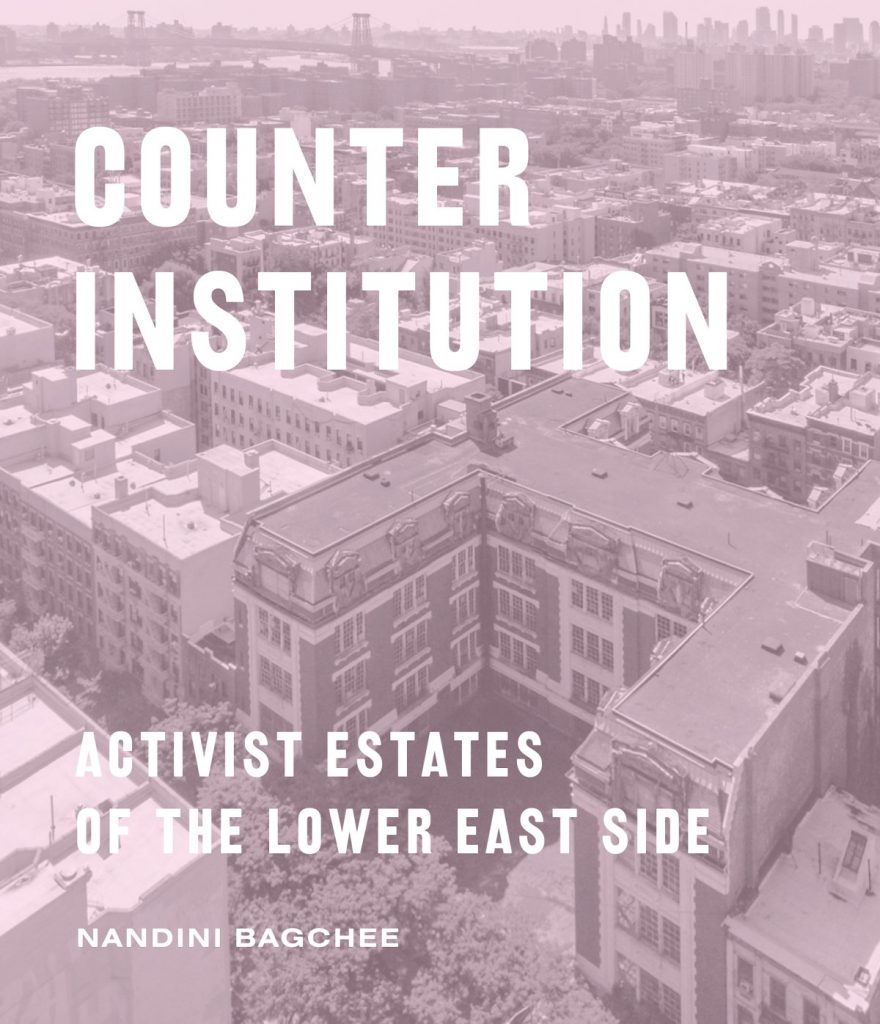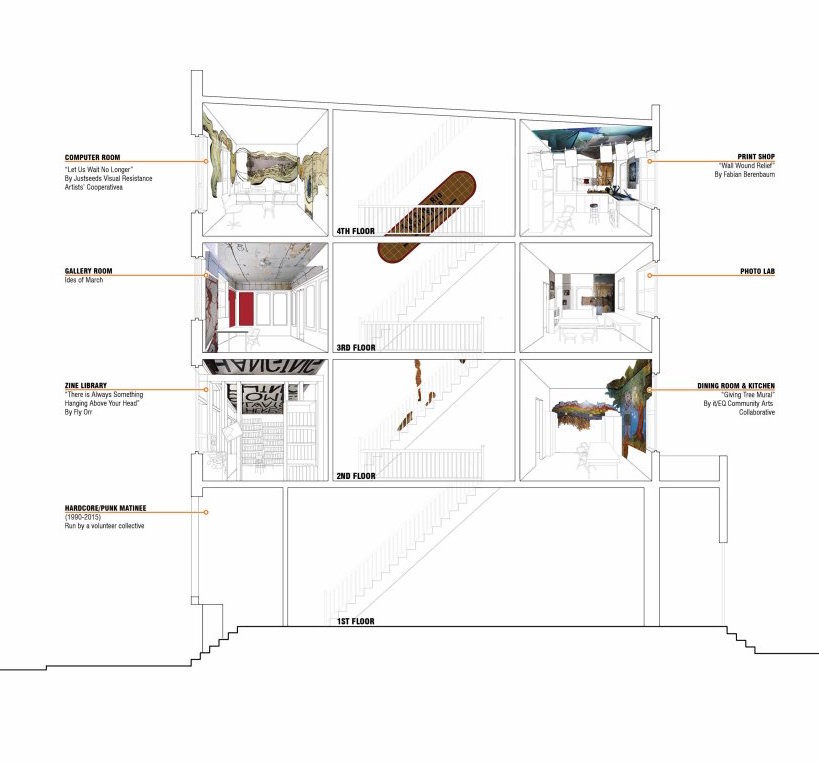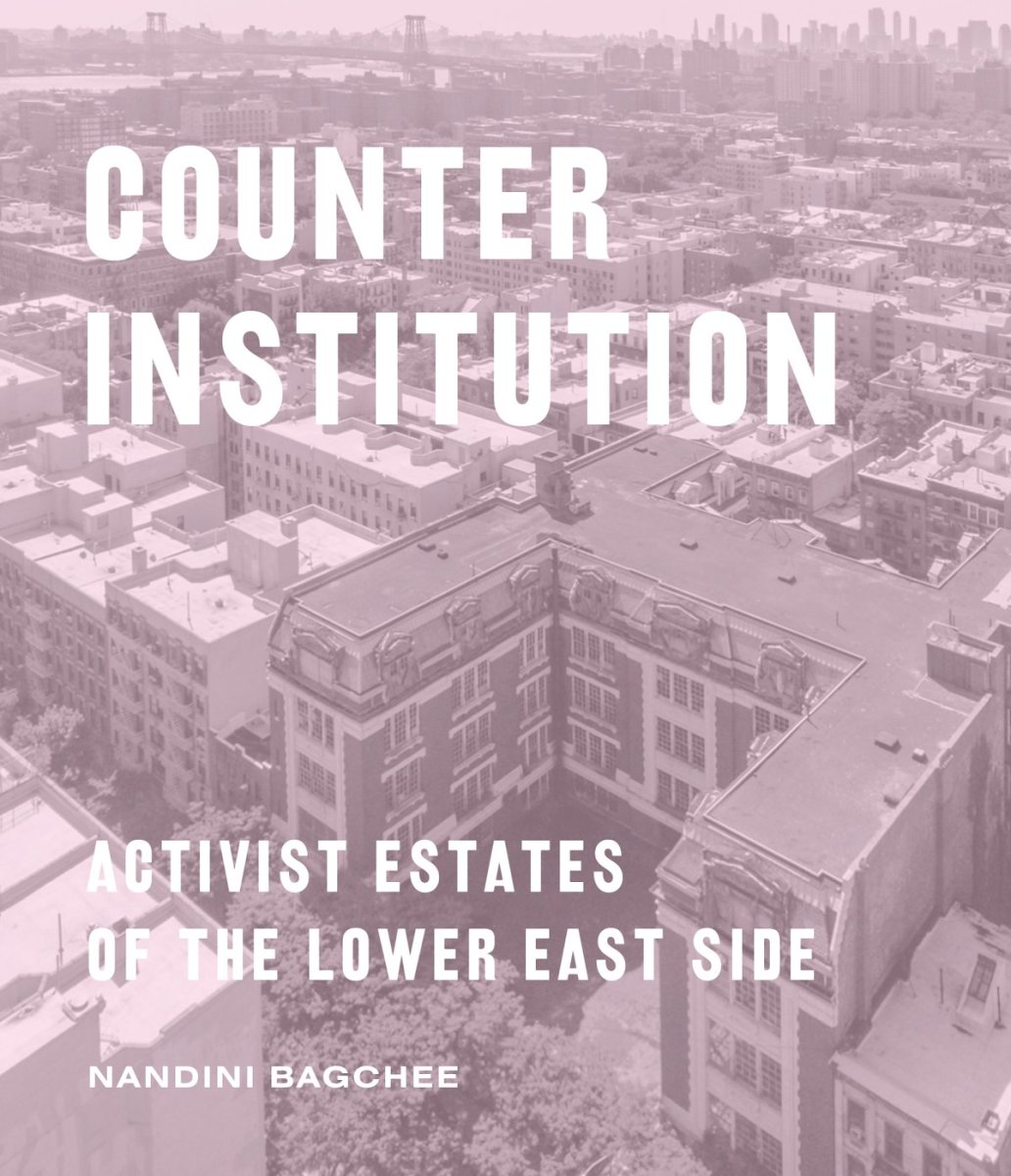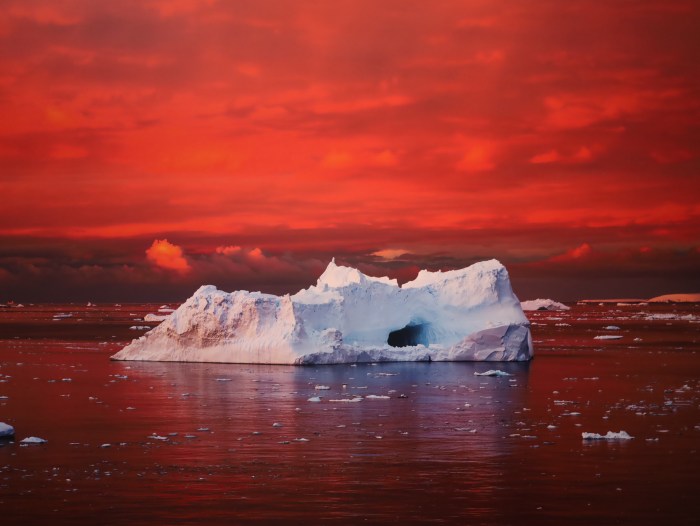
BY BILL WEINBERG | It gives a sense of passing time to see much of your life reflected in a work of recent history.
This I experienced while reading “Counter Institution: Activist Estates of the Lower East Side,” by Nandini Bagchee, new from Empire State Editions.
In her review of oppositional spaces in the neighborhood over the past generations, architect and CCNY history professor Bagchee focuses on three buildings: the “Peace Pentagon” on Lafayette St., CHARAS community center on E. Ninth St., and ABC NO RIO artists collective on Rivington St. All these counter-institutions have impacted the lives of us longtime denizens of the alternative Lower East Side.
Bagchee begins with deeper historical background. She notes the Depression-era Catholic Worker movement, still surviving on E. Third St., and its shorter-lived Presbyterian counterpart, the Labor Temple, on Second Ave. and 14th.
After World War II, glimmers of the counterculture emerge, with outfits such as the Living Theater and Fluxus art collective, which attracted future luminaries Yoko Ono, La Monte Young and Nam June Paik.
The Peace Pentagon, home of the pacifist War Resisters League and affiliated AJ Muste Institute, was bought in 1969, after the F.B.I. raided W.R.L.’s old office, Downtown on Beekman St.. A sobering photo shows the ransacked Beekman offices.
The Lafayette address was only on the Lower East Side by broadest definition. Late W.R.L. graybeard David McReynolds, interviewed by Bagchee, describes a declining post-industrial “non-neighborhood” back in ’69. Over the following decades, the building hosted numerous activist groups — anti-nuclear campaigners, housing advocates, media collectives, international solidarity organizations.
Bagchee surveys the campaigns W.R.L. and allied organizations waged during these years — protests against the Vietnam War, the nuclear disarmament mobilization that brought a million to Central Park on June 12, 1982, demonstrations against the post-911 paroxysms of militarism.

A line is drawn from the pre-war counter-institutions to the Peace Pentagon. W.R.L.’s foundation was named for Abraham Johannes Muste, a stalwart of the organization who had been a preacher at the Labor Temple.
Bagchee next turns to the “communitarian estates of Loisaida,” the Puerto Rican heart of the Lower East Side east of Avenue A, where visionary residents reclaimed spaces from urban blight. This begins with the 1967 establishment of the Real Great Society, an activist group whose name played on President Johnson’s Great Society antipoverty program. This developed into CHARAS — an acronym for its founders, the first of whom, Chino García, remains a grandfather figure for the neighborhood.
CHARAS interacted not only with the Young Lords (Puerto Rican equivalent of the Black Panthers) but broader movements for ecological sustainability. A homestead building on 11th St. was fitted with solar panels and wind-powered generator. Futurist architect Buckminster Fuller helped erect geodesic domes in vacant lots. And Vermont’s Institute for Social Ecology, founded by anarchist thinker Murray Bookchin, looked to CHARAS as an organic application of community self-empowerment.
In 1978, CHARAS established El Bohio community center in the abandoned Public School 64 on E. Ninth St. This would become a point of cross-fertilization for Puerto Rican activists and the white punks and squatters who moved into the area. La Plaza Cultural community garden down the block still thrives today. Color photos show the old murals on the walls above La Plaza (since painted over), depicting international revolutionary struggle with scenes of neighborhood renewal-from-below.
Linking CHARAS and the Peace Pentagon, a 1979 issue of the W.R.L. magazine Workshop In Nonviolence was dedicated to the community-building in Loisaida.
Finally, Bagchee turns to ABC NO RIO — which also began with reclaiming an abandoned property. The decrepit tenement at 156 Rivington St. became an underground art gallery in 1980. The eccentric name came from an old Spanish sign on the storefront, reading “Abogado, Notario” (“lawyer, notary”), with some letters missing.
A decade later, ABC NO RIO became a focus of the city’s hardcore punk scene. After legendary CBGB rock club on Bowery suspended punk matinees due to sporadic violence, the Rivington location took them up — barring “racist, sexist or homophobic bands,” to head off fisticuffs.
It would also host a zine library and computer room in addition to gallery and performance space.
All these institutions have had to vacate. The Muste Institute sold the decaying Lafayette building in 2016. The Institute and W.R.L. are in new offices on Canal St. — but as renters, not owners.
The city evicted CHARAS in 2001 from the old P.S. 64 building — which remains vacant. Bagchee notes activist efforts to prevent the developer who bought the building from destroying it for luxury housing —and to pressure the city to return it to the community, envisioning a rebirth of El Bohio.
ABC NO RIO abandoned the Rivington building because of structural problems, and in 2016 it was demolished. ABC has raised money to rebuild on the site. Meanwhile, it is exiled at the nearby Clemente Soto Velez Cultural and Educational Center.
Bagchee closes by noting the “need to build more relevant space for insurgent action” — a pressing mandate at this moment of deep reaction. But the gentrification of the Lower East Side, and the high premium on real estate, make this far more challenging.
As the murals above La Plaza Cultural sloganize, “La lucha continua.”
The struggle continues.


















